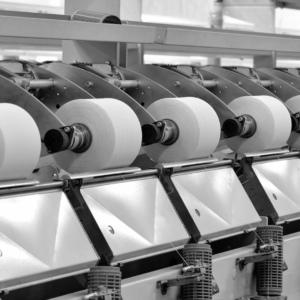Ozone technology
Washed by the atmosphere
In the ever-evolving landscape of sustainable practices, one innovation stands out as a beacon of progress: Ozone Technology. This groundbreaking process redefines textile production, harnessing the power of ozone gas to bleach and treat fabrics. With its myriad benefits, Ozone Technology is reimagining the textile industry, making it not only more environmentally friendly but also safer for workers and more conducive to producing high-quality fabrics.
Embracing Eco-Friendly Excellence
Ozone Technology is redefining the rules of textile production by putting the environment at the forefront. Traditional methods often contribute to excessive water usage, chemical consumption, and the generation of copious amounts of waste. In stark contrast, Ozone Technology reduces these detrimental impacts, positioning itself as an environmentally friendly alternative.
Key Benefits at a Glance
-
Reduced Environmental Impact: Ozone gas, being the cornerstone of this process, carries a significantly lower environmental footprint compared to traditional washing methods. Its use eliminates the need for toxic chemicals and reduces energy consumption.
-
Improved Worker Safety: One of the most remarkable facets of Ozone Technology is its inherent safety. By eliminating the requirement for corrosive chemicals, it provides workers with a safer environment, promoting their well-being and ensuring optimal health.
-
Enhanced Fabric Quality: The gentle nature of the process ensures that textile quality is preserved. The absence of aggressive treatments and friction on garments leads to fabrics that are free from defects and maintain a consistent appearance.
-
Innovative Designs: Ozone Technology empowers creativity by enabling the creation of novel washes and effects with high reproducibility. Designers can explore a plethora of discharges and techniques, resulting in diverse and captivating designs.
-
Reduced Water Consumption: Ozone machines operate without the need for water to achieve their effects. This drastic reduction in water usage per kilogram of garment positions the technology as a champion of water conservation.
Championing Sustainability in Every Aspect
Beyond its immediate benefits, Ozone Technology aligns perfectly with the pillars of sustainability, contributing to a brighter future for our planet.
-
Non-Polluting Energy: The use of ozone gas ensures that the energy employed is clean and non-polluting, fostering a healthier atmosphere.
-
Responsible Production and Consumption: By minimizing resource consumption and waste generation, Ozone Technology exemplifies responsible production and consumption patterns.
-
Positive Impact through Technology and Innovation: The introduction of such transformative technology showcases the positive impact that innovation can have on traditionally resource-intensive industries.
-
Caring for Life and Terrestrial Ecosystems: Ozone Technology’s gentle and environmentally conscious approach extends its care to the ecosystem, demonstrating a commitment to preserving life and our planet’s well-being.
The Process: A Symphony of Environmental Responsibility
Ozone Technology follows a precise and impactful sequence:
-
Decomposition: Air in the atmosphere breaks down into oxygen molecules (O and O2).
-
O3 Generator: Oxygen atoms reunite, forming ozone gas, which is then introduced into the tumbler.
-
O3 Action: Ozone engages with the garment, reacting with the dyeing of fibers and oxidizing them.
-
Machine Process: The ozone machine gently rotates the garments, all without the need for water.
-
Without Discharges: Following the process, ozone is safely destroyed, returning to the atmosphere as oxygen.
Ozone Technology epitomizes the marriage of innovation and sustainability. By harnessing the natural power of ozone gas, the textile industry is not only transforming its practices but also contributing to a more eco-conscious world. This technology is a reminder that progress is possible without sacrificing the well-being of our planet, serving as a blueprint for other industries to follow suit in their quest for sustainability.
Explore More Articles Here:
Natural Cotton Color
In the ever-evolving world of sustainable fashion, a remarkable transformation...
Read MoreFibers from renewable raw wood
In the ever-evolving world of fashion and sustainability, the textile...
Read More


